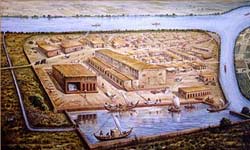Taj Mahal, located on the banks of the Yamuna River is one of the Seven Wonders of the World. The Mughal Emperor Shahjahan as a memorial built this marble tomb for his wife, Mumtaz. A dream etched in milky white pristine marble is the peerless monument portraying the beauty of eternal love.

A commemoration of the memory of Shahjahan’s beloved wife, Taj Mahal is indeed India’s rich tribute to womanhood. The construction of the Taj commenced in 1631 and was completed in 1653. Workers were gathered from all over the country and from Central Asia. About 20,000 people were recruited to translate this wild dream into a reality. The main architect was Ustad Isa Khan, who was brought all the way from Shiraz in Iran. The walled complex includes two mosques and an imposing gateway. The tomb is encased in white marble that is decorated with flawless sculptures and inlaid design of flowers and calligraphy.

A commemoration of the memory of Shahjahan’s beloved wife, Taj Mahal is indeed India’s rich tribute to womanhood. The construction of the Taj commenced in 1631 and was completed in 1653. Workers were gathered from all over the country and from Central Asia. About 20,000 people were recruited to translate this wild dream into a reality. The main architect was Ustad Isa Khan, who was brought all the way from Shiraz in Iran. The walled complex includes two mosques and an imposing gateway. The tomb is encased in white marble that is decorated with flawless sculptures and inlaid design of flowers and calligraphy.






